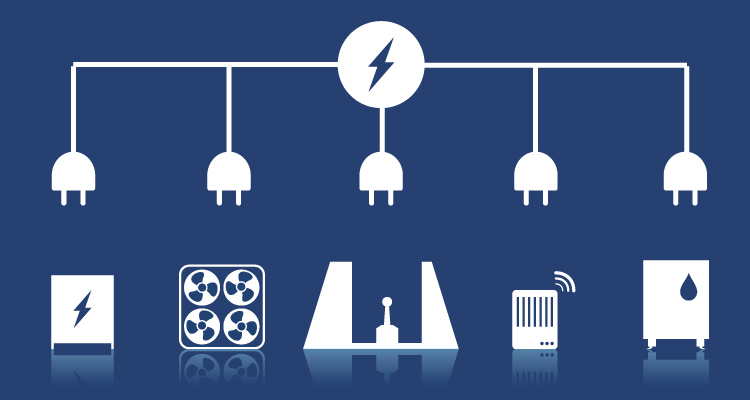We use cookies to make your experience better. To comply with the new e-Privacy directive, we need to ask for your consent to set the cookies. Learn more.
Electrical Distribution for Forklift Battery Rooms
Every battery room has distinctive power requirements, but these can change as operations grow. Don’t just wire the charging areas for your current needs; plan ahead for future changes — or, even better, ongoing expansion.
Powering The Fleet’s Power Source

Of course, you don’t just need to power your chargers — you’ll also need to provide electricity for ventilation systems, battery handling equipment, and heating and cooling systems. Check the power requirements of each piece of equipment you’ll incorporate to make sure you have enough capacity to operate everything.
Since you'll need significant voltage, it's a good idea to locate battery charging areas as close to a main power feed as possible. The farther away your charging area is from a main power feed, the more costly it will be to supply with adequate power.
Eliminating Clutter in the Battery Room
Once you provide sufficient power for all equipment, your biggest day-to-day challenge becomes keeping your battery room neat, orderly, and capable of efficiently servicing your fleet. This can be a tougher challenge than it may seem. Battery charging rooms turn into a mess of cables and equipment all too easily. Design the space to provide ample room for your staff to quickly and safely access chargers and other equipment, without cables sprawled all over the place.
BHS' Electrical Distribution System (EDS) provides a solution to the daily challenge of keeping battery charging areas tidy and efficient. The EDS provides flexible power distribution to all 480 V / 3 ph components in an Operator Aboard Battery Extractor System, including Battery Extractors, chargers, and Battery Wash Equipment.
Battery Charging Areas Grow And Change
You'll also need to plan for future expansion or other changes to battery charging and maintenance equipment — without spilling out past your target footprint. Space is always at a premium in warehouses. Most operations will benefit from limiting the size of the charging room as much as possible, both today and as demand grows.
Plan for flexibility in your new battery room. An integrated electrical distribution system like the EDS provides a platform to address changing needs. Installation costs for the EDS are only about a third of a traditional system, and it continues to save money as you install new chargers.
The EDS is a stand mounted, high-density system, so it conserves space as much as possible. The system can be customized using track busway that can be tapped at any location with a simple turn-n-lock connection.
These systems also offer an optional charger shutdown system that connects easily and efficiently with the BHS Battery Room Ventilation System (BRVS) or with a Hydrogen Gas Detector (HGD). This charger shutdown system disables the chargers in the event of dangerously excessive hydrogen gas accumulation for optimal safety.
A thorough plan for power distribution will create day-to-day cost savings that provide a quick return on investment. Electricity is the lifeblood of your forklift fleet, and your battery room is the "heart" of your facility. Install a great electrical distribution system to keep that heart as healthy as it can be.
References:
“NFPA 70: National Electrical Code.” NFPA. National Fire Protection Association, 2015. Web. 26 Feb. 2016.
“Powered Industrial Trucks (Forklift).” OSHA. Occupational Safety & Health Administration, United States Department of Labor, n.d. Web. 26 Feb. 2016.
“Using Electric Storage Batteries Safely.” HSE. Health and Safety Executive, Government of Great Britain, n.d. PDF. 26 Feb. 2016.
